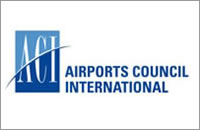
According to ACI, in September 2017, Asia-Pacific airports reported growth of +7.3% while the Middle Eastern airports recorded a decline of -0.8% compared to the same period last year. For the year-to-date, Asia-Pacific and Middle East grew +7.3% and +5.6% respectively.
Air freight in Asia-Pacific and the Middle East grew +9.4% and +7.3% respectively in September. For the year-to-date, Asia-Pacific and Middle East grew +9.8% and +7.7% respectively.
In September 2017, exports continued to drive strong air freight growth in Asia-Pacific led by: Hong Kong (HKG) +9.1%, Shanghai Pudong (PVG) +12.3% and Seoul Incheon (ICN) +11.3%. In the Middle East, the pace of growth maintained strength, Dubai (DXB) grew by +5.8% and Doha (DOH) grew by +9.2%.
Overall, air freight delivered very strong results for the first nine months of 2017. Monthly growth in both Asia-Pacific and Middle East maintained consistently between 9 to 10% in the third quarter.
Among the top 10 freight airports in the Asia-Pacific and Middle East combined, half recorded double-digit growth for the year-to-date. The strong demand is expected to persist as the sector steps into the traditionally strong fourth quarter.

About ACI Asia-Pacific
ACI Asia-Pacific, one of the five regions of the Airports Council International (ACI), is based in Hong Kong and represents 104 members operating 580 airports in 48 countries in Asia-Pacific and the Middle-East.
As the only global trade association of the world’s airports, ACI represents airports’ interests with governments and international organizations, develops standards, policies and recommended practices for airports, and provides information and training opportunities to raise standards around the world. In 2015, ACI Asia-Pacific airports have handled 3.1 billion passengers and 52.2 million tonnes of cargo.









